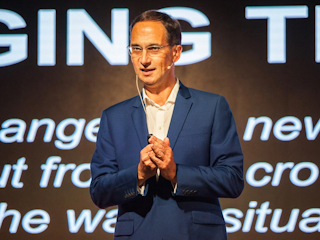We believe that the answer lies in evolving the role of the store in the customer journey. Traditionally, stores have been points of conversion. Advertising drove traffic, specialty stores and department stores allowed for feature and price comparison, and sales folks helped in the conversion which allowed consumers to leave that very day with the item of their choice. Today, social media relationships drive the most influential product awareness, purchases convert on smartphones, and customer’s behavior online helps companies predict what a customer needs before they know they need it. The fully controlled retail funnel has sprung leaks.
That’s what retailers are up against today. The comfort zone of the store as the sole point of conversion has left most retailers exposed. And it begs the question, how has the store evolved in the eyes of the customer? And what does that mean for retailing in the future?
Before retail’s digital revolution, the physical store was where the “first moment of truth” happened. Crest over Colgate. Tide over Cheer. People were made aware of the products through marketer’s pushed communications which drove store traffic and in-store conversion. Because that linear path to purchase no longer exists, it changes how the store could be utilized as a marketing tactic. A couple examples:
Starbucks has turned all of its coffee shops into micro-fulfilment centers powered with their ‘Order & Pay’ app. Imagine the operational efficiency and expedited service it can now provide with a way to track and manage inbound orders. Contrast that with the stress and missed sales due to a line out the door.
American Girl is turning their flagship store into a place where girls and their dolls can bond and create memories together. This is a store they want families to visit long after the star of the show, the doll, is purchased.
This short list demonstrates the new ways of thinking about the role of the store in the marketing mix. It meets consumers needs, conforming to their lifestyle instead of conforming to the brand’s established business operations.
Valtech has explored some micro-concepts that, in aggregate, can help push back on the “Amazon Effect” and help retailers reinvent themselves.
Areas of focus include:
- The Digital Tactics of the ‘Store of the Future’: Let’s not introduce technology for technology’s sake. We’ll examine the toolbox of tactics and the appropriate times to use them to create a useful omni-channel program.
- Enhancing the Customer Journey: How customer journeys can be enhanced with new ideas and technology to increase sales and profit and, in turn, begin to fix the cracks in the retail world as we know it.
- Consumer Expectations: What digital experiences are customers looking for in retail store designs? We will be looking at these wants and needs from a digital perspective while highlighting in-store design implications.
Retail isn’t dead. People need and want products and services that make their lives better. And the purveyors of those products and services still need outlets to get those items and experiences to the public. But why, how, when, where and what is no longer dictated by the retailer. The consumer is now dictating and it’s up to the retailer and its partners to figure out this omni-channel puzzle and evolve. It’s tantamount to their survival and prolonged success.







